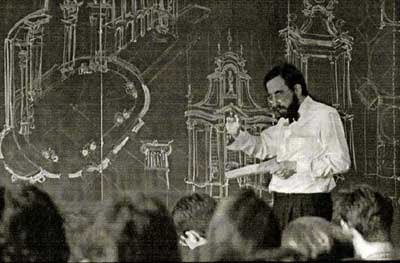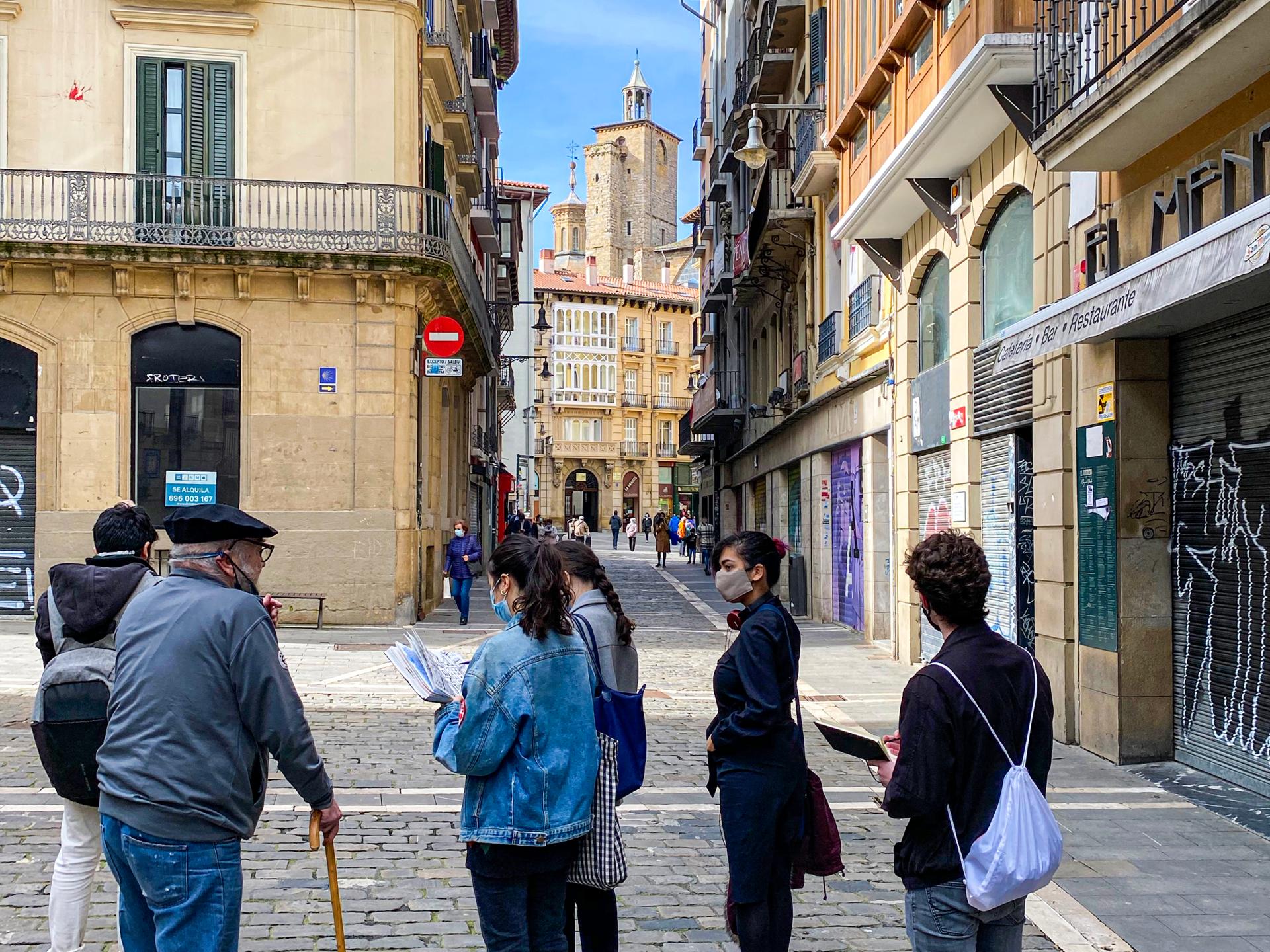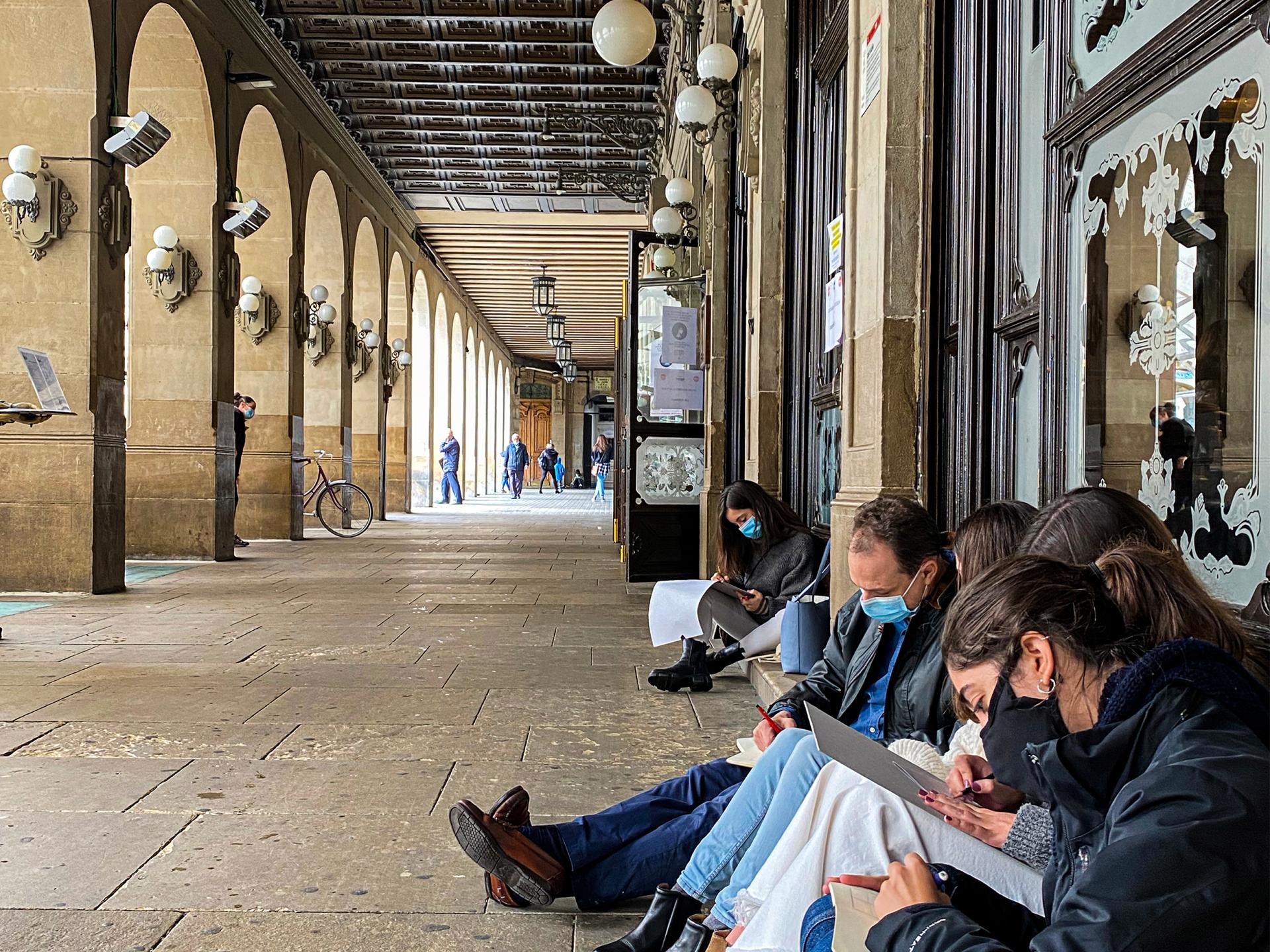Joaquín Lorda / European Sketching Club
Basic information
Project Title
Full project title
Category
Project Description
We need "recruits" who are passionate about vindicating the practice of freehand drawing as an enduring and universal form of language with which to know, document, and preserve both the tangible and intangible European heritage, as well as the environment in which we live. Each interested community will form sketching clubs that will admit any interested and enthusiastic recruits. Press "ESC" from conformity and join the European Sketching Club!
Project Region
EU Programme or fund
Description of the project
Summary
The concept is based on the recovery of the practice of freehand drawing through different entities, called sketching clubs, figures that although they have traditionally existed for more than 200 years, lost their prestige in modern societies due to various reasons such as elitist character, access to photography and computer drawing programs. However, we claim their recovery and adaptation, locating and organizing interdisciplinary and heterogeneous working groups that unite the passion for drawing, its practice and learning, which have been neglected and from whose skill multiple values can be extracted, capable of achieving a great intellectual development based on observation and analysis. This is confirmed by the majority of professionals in creative processes in all fields, who base their skills on drawing as the first trigger for their creativity.
Just as the language of Esperanto was born with the aim of unifying and facilitating international communication, drawing is already a universal language, easier to learn, and whose practice is intrinsic to the very origin of our species, in view of the numerous sites that populate Europe. A Europe that draws is a Europe that develops an awareness of the aesthetics and the value of its material, natural and artistic heritage, not only through the isolated efforts of a small group of artists or skilled individuals but involved in a collective creation in which everyone has the right to participate. In the same way that today it is unthinkable that literacy would be reserved only for writers or a specific group of people or social category, we aspire to interest the citizens of every region and place of Europe in the practice of drawing, claiming the power and the benefits that are obtained from its learning and exercise.
Key objectives for sustainability
The sketching clubs, which are presented as a germ similar to other groups organized to raise awareness and solve the problems of certain European communities, aspire to achieve a similar effect of a more universal and transversal nature by being working groups accessible to motivations beyond the common physical location or the difficulties detected a priori as a cause of grouping. The initial premise will be the enjoyment provided by the exercise of drawing and through which we invite to celebrate the strengths of each community and then share them and inspire new ones to imitate or enrich them, solving any common problem through this network of people who look and analyze when drawing.
Sustainability arises naturally because of the innocuousness of the materials, instruments, supports of drawing, their minimal cost, and because of the feelings of affection and appreciation for the environment that appear and grow in the sketchers as they practice and observe the local heritage, which leads them to value, care for and respect it, an effect that guarantees the sustainability of the environment that one captures in his or her drawings. The ESC will organize exhibitions, contests, and public auctions of the graphic works, where resources will be obtained to invest in solidarity, environmental and social actions on a larger scale. Drawing and celebrating what is drawn serves both to document and to contribute to the treatment of different problems that we can find on the way to a new and better consideration of all types of heritage in Europe.
The initiative is circular in nature as it is a project that is composed of the exercise itself developed by its members; it refers to the enhancement of monuments and environments that can be the setting for various activities. At the same time, visibility is given to the most outstanding personalities of each community that give the name to each of the clubs, organized in turn under the guidelines of the New Bauhaus.
Key objectives for aesthetics and quality
By drawing, one learns to measure and identify the forms of development and compositional systems that govern all things and nature, as well as the aesthetic codes present in each culture, which ultimately translates into being more creative and innovative on the aesthetic level.
The sketching clubs enjoy numerous aesthetic possibilities as they are based on the practice of an artistic path in itself as drawing is. The transformation of drawing and its teaching was at the base of the artistic transformation of the 20th century in all areas. Paying attention to graphic language and its procedures is to attend to the very process of cultural and artistic creation, which can also be complemented by lectures or small theoretical sessions of other disciplines.
We propose the richness and value of creating a bank of graphic works as a seed bank where the heritage of Europe is documented, not only monumental and known worldwide, but also that of each community or small place, however remote or isolated it may be, starting with those cases where the integrity of the reality to be drawn is in danger or its disappearance is possible, with the consequent loss for future generations.
The new digital tools make available to everyone the possibility of bringing together all the graphic information generated by the various groups online, making it easy to consult and access from anywhere in Europe or beyond. In the same way that some cities already have digital catalogs of their most representative architectural projects, it seems appropriate to propose a joint and European catalog of all those drawings or other documents that could promote the knowledge and subsequent defense of projects, traditions, or spaces constituting a documentary source for multiple purposes including research work of other nature.
Key objectives for inclusion
The clubs will admit any person who intends to learn through freehand drawing, although they will be presided over by academics dedicated to the graphic discipline who will try to include all the bibliography or aesthetic experiences of the subject.
We propose as a model the pilot experience developed in Pamplona in the first sketching club with the School of Architecture of the University of Navarra as headquarters and under the name of Joaquín Lorda Sketching Club (JLSC) in homage to the figure of Joaquín Lorda Iñarra (1955-2016), researcher and virtuoso of sketching. Professor of History of Architecture at the University of Navarra, Honorary Professor at the Instituto Tecnológico de Monterrey (Mexico), and member of the Royal Academy of Fine Arts of San Jorge (Barcelona), widely recognized in academic circles for his interpretation of the work of the eminent art historian Ernst Gombrich with whom he maintained a close friendship and correspondence. He was admired, respected, and loved by his students for the quality of his classes, which he always illustrated with large drawings that he made freehand on the blackboard, his friendly manner, and for setting up several academic travel programs throughout Spain, America, and Europe, to teach how to learn about monumental architecture through drawing in situ.
Joaquín was always an architect open to everything and everyone, and so will be the project, without any requirement or previous required level being the members in charge of ensuring the correct use, learning and objectives through courses, workshops, and regular practice. The JLSC, with a greater university presence due to the context of its creation, was not limited to a young audience since it benefited from the exchange with other groups of sketchers and more veteran artists such as the Pamplona Urban Sketchers who were in turn reaffirmed with the newly founded club. This relationship bore fruit in joint activities such as trips and cultural visits.
Innovative character
The most innovative aspect of the concept lies precisely in not inventing anything, but in recovering those practices and concepts of proven effectiveness in European history, such as drawing and the association of people of common affinity around it, although renewing all of them by incorporating new technological tools and didactic methods of learning in its exercise as well as transforming the exclusive English gentlemen's clubs of the eighteenth century in which we find the first inspiration and now become open and heterogeneous associations with an academic spirit in its origin extrapolated to the whole European society in its spirit of pursuit of knowledge and appreciation of beauty that made universities and academies one of their identities.
Some of the problems of the architectural profession and that the pandemic has highlighted are the lack of sufficient resources for the digitization of graphic materials preserved in the archives of architecture, for example in the municipal archives of Spanish cities, within which almost all the building activity of the last century is located. This project was formalized in the search for answers to these problems that would make it easier to bring this type of drawing, characteristic of the architectural profession, to a general public that is not so specialized, who would easily appreciate the artistic and not only technical dimension of these documents with which the history and evolution of the buildings and spaces that make up the city today are reconstructed and on which future spaces can be conceived.
Another fundamental characteristic of the project is that in addition to the participation of all types of people, regardless of gender, race, origin, or economic capacity, it includes young people and adults with different problems who find in this activity an escape route from situations of vulnerability or exclusion, as well as people who have finished their working life but want to remain active.



